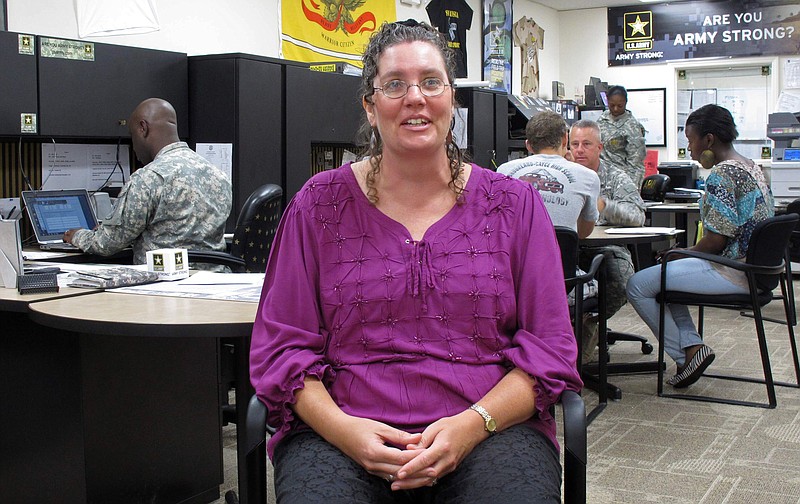COLUMBIA, S.C. (AP) - A war over, the Army heeds Congress' demands to cuts costs by paring its ranks. But the nation's economy is weak, and unemployment rates are high. It's an uncertain time for thousands of service members and their families.
Sound like today? It's a scenario that has played out previously when big conflicts end, most recently two decades ago. What's happening now as the Army, the biggest military branch, carries out plans to shrink by 80,000 troops in the wake of the Iraq War resembles what soldiers went through in the early 1990s, when the end of the Cold War and collapse of the Soviet Union prompted the U.S. to trim the military for what was called "the peace dividend."
The 1990s may be remembered as economic good times. But those came later in the decade. First there was a recession in 1990 and 1991 that, though shorter and milder than the Great Recession of 2007-2009, was painful at the time and drove up jobless rates just as ex-soldiers were released into the workforce.
"It's hard to open that letter that says, "As of July 1, your services are no longer needed,"' said retired Army Col. Rick Kiernan, who helped top generals reduce the ranks in the 1990s.
"It's a hard message to deliver as well. We're talking about people who've volunteered to serve," said Kiernan, now retired and director of a web-based information television channel for veterans in Washington, D.C.
This time around, the main U.S. ground forces are set to be cut by 100,000 troops. The Army is expected to cut about 80,000 soldiers from its ranks of about 570,000 over the next six years. The smaller Marine Corps is dropping about 20,000 men and women to reach 182,000.
To a large extent, the cutbacks are the result of a budget agreement reached last summer between President Barack Obama and congressional Republicans, calling for a half-trillion dollar cut in projected defense spending over 10 years.
Pentagon officers have said they think they can make the cuts less painful by stretching them out in several ways: accepting fewer new soldiers each year, asking for voluntary reductions, encouraging service members to retire, and moving uniformed servicemen and women into jobs vacated by civilians.
As the service branches get smaller, every soldier and Marine who wants to stay in uniform faces intense scrutiny, Kiernan says.
"What might not be deemed a problem in war time when they need people, like misconduct in the barracks, could rise to a reason to pass someone over for a promotion" or to be retained in the ranks as a senior enlisted officer, he said.
Even a good job record and years of experience won't help when the military is paring back.
Eleven years in the Marine Corps as an enlisted signals intelligence specialist and as an officer in aircraft maintenance didn't save Joe Carpenter of Atlanta, Ga., when the Corps decided to cut back on his job specialty.
Carpenter said he found work this year as a program manager at Gleason Research Associates in Huntsville, Ala., a Defense Department contractor involved in weapons system engineering, inventory management and counterinsurgency and covert operations training and support.
"They just took a sickle to that job description," said Carpenter, 33, said of the Corps. "I had several friends as well who weren't selected and had to execute the end of their active duty service."
Whether facing cuts today or back in the 1990s, leaving the military behind is a life-changing event.
Unemployment rates rose from less than 6 percent in most of 1990 to a peak of 7.8 percent in mid-1992 before starting to edge back down. The national jobless rate was 7.7 percent in November.
Leslie Ann Sully, who served with an Army medical unit in Germany and deployed to Saudi Arabia in the first Iraq war, said she volunteered to leave the Army in 1992.
"After Desert Storm, they were trying to downsize in Europe, and I was released from my commitment. I went into the inactive reserve," said Sully, who returned to the U.S. and a year later married her Army sweetheart.
"I could have been recalled to active duty if they had really needed me," she said.
They were moved to an Army post, where she was hired by the service for a civilian job. Years later, she still works for the Army as a member of the Recruiting Command at Fort Jackson, S.C.

